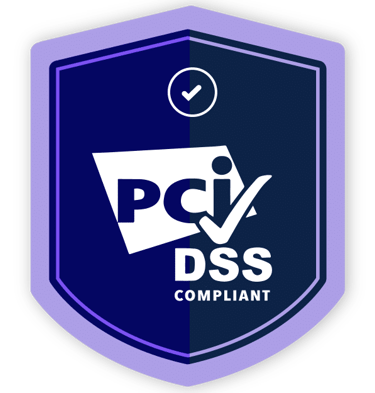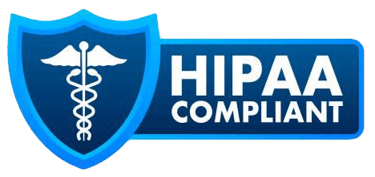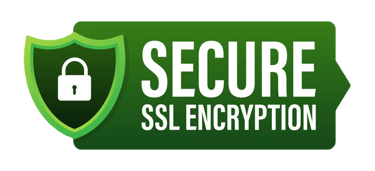Impact of the 2026 Continuing Appropriations and Extensions Act on Home Health & Hospice Providers
The federal government shutdown has ended, restoring key Medicare telehealth flexibilities and stabilizing critical funding that directly impacts home health and hospice providers—here is everything agencies need to know to remain compliant and prepared.
11/22/20254 min read
On November 12, 2025, Congress passed the Senate Amendment to H.R. 5371 – Continuing Appropriations and Extensions Act, 2026, officially ending the 43-day federal government shutdown. For home health and hospice agencies across the United States, this legislation brings long-awaited clarity, restores essential telehealth flexibilities, stabilizes Medicare operations, and prevents deep payment cuts.
Understanding these changes is critical for maintaining Medicare Conditions of Participation (CoPs), ensuring compliance during surveys, avoiding payment disruptions, and planning operationally for the months ahead. Below is a detailed, compliance-oriented breakdown of every update—and what it means for administrators, clinical leaders, compliance officers, DONs, and agency owners.
Telehealth Flexibilities Restored Through January 30, 2026
One of the most significant impacts of the shutdown—and its resolution—centers on the lapse and restoration of Medicare telehealth flexibilities.
Home Health Telehealth Flexibilities
Flexibilities under 1834(m) have been retroactively restored, meaning the temporary lapse that occurred on September 30, 2025, is now treated as if it never happened.
This directly impacts:
Face-to-Face (F2F) Encounters
Home health agencies may once again conduct physician F2F encounters via telehealth, consistent with pre-lapse rules.Plan of Care (POC) Certification
Telehealth encounters may be used for certification and start-of-care documentation, as long as the encounter meets CMS requirements.PDGM Intake & Eligibility Documentation
Agencies should review any SOC conducted during the lapse period to ensure documentation reflects compliance under the newly restored rules.
Hospice Telehealth Flexibilities
Hospice providers also see a return of critical flexibilities:
F2F Recertification Telehealth Is Restored
Hospice physicians and NPs may again complete the recertification face-to-face encounter via telehealth.
This is especially impactful for:
Rural hospices
Large geographical service areas
Patients with mobility challenges
Staffing shortages that may delay in-person visits
Compliance Reminder:
CMS still requires that telehealth encounters be synchronous, properly documented, and clearly tied to the patient’s terminal prognosis. Hospices must ensure the encounter aligns with certification requirements, symptom burden, and disease trajectory.
Hospice Survey Funding Maintained — Stability for Survey Cycles
The new legislation continues the $2 million annual allocation toward hospice surveys, ensuring agencies will continue to be surveyed at least once every 36 months, per federal mandate.
This is important because:
Survey cycles were at risk due to the shutdown
Delays could have created backlog and compliance gaps
Agencies benefit from continued oversight consistency
For hospice leaders, the focus should remain on:
CTI & Narrative accuracy
Plan of Care interdisciplinary coordination
IDG documentation quality
Visit frequency compliance
Timely RN assessments
Medication reconciliation
GIP criteria adherence
Volunteer requirements (5%)
QAPI structure and reporting
Maintained funding means survey teams will continue actively assessing compliance with these high-risk areas, and agencies must remain survey-ready at all times.
Statutory PAYGO Waived Through 2026
Without congressional action, statutory PAYGO rules would have imposed an additional ~4% sequestration cut to Medicare payments—significantly impacting home health and hospice reimbursement.
By waiving PAYGO through 2026, Congress:
Prevents payment reductions to home health providers
Protects hospice per diem rates
Allows agencies to maintain financial stability post-shutdown
This is crucial for operational continuity, especially while agencies continue navigating:
Wage inflation
Staffing shortages
High travel costs
PDGM LUPA thresholds
Increasing medical supply costs
Agencies should still anticipate ongoing scrutiny around:
Medical necessity documentation
ADR/TPE audits
PDGM behavior adjustments
Level of care justification for hospice
While the PAYGO waiver provides temporary relief, agencies must continue bolstering documentation accuracy and revenue cycle processes to avoid payment delays or denials.
VA & TriCare Funding Stabilized
Another major update in the Act affects agencies serving veterans and military beneficiaries.
Veterans Affairs (VA)
The legislation includes full-year appropriations for the VA, which:
Stabilizes funding for purchased home health and hospice care
Ensures timely authorization renewals
Prevents service disruptions for veterans
Supports continuity of care for long-term VA enrollees
TriCare
TriCare may now:
Resume processing claims
Pay for services delivered between Oct. 1, 2025 and Jan. 30, 2026
For agencies that experienced delays, this means:
Outstanding claims will begin moving forward
Cash flow constraints may ease
Backlogged reimbursements will start clearing
Administrators should review all TriCare claims submitted during the shutdown and resubmit any claims rejected due to temporary system closures.
Introduction of the Telehealth Modernization Act (H.R. 5081)
Although separate from the shutdown resolution, Congress simultaneously introduced the Telehealth Modernization Act, which—if enacted—would significantly reshape telehealth at the Medicare level.
Key provisions of the bill include:
1. Extension of Core Medicare Telehealth Provisions Through September 30, 2027
This would ensure:
Continued flexibility for F2F encounters in home health
Broader telehealth access across Medicare programs
More certainty for long-term operational planning
2. In-Person Mental Health Requirement Delayed Until 2027
This delay would maintain:
Unrestricted tele-mental health services
More accessible behavioral support for homebound patients
Less administrative burden on agencies
3. Hospital Care at Home Flexibilities Extended to 2030
Though primarily impacting hospitals, this indirectly benefits post-acute providers by:
Reducing inpatient overflow
Strengthening transitional care pathways
Improving continuity of care and discharge planning
4. Enhanced DME Program Integrity Controls
This is expected to:
Reduce fraudulent DME activity
Increase documentation requirements
Tighten coordination between home health agencies and DME suppliers
5. Telehealth Access Expanded for Individuals with Limited English Proficiency
Agencies may see:
More requirements for interpreter services
Increased documentation for language support
Possible integration of new telehealth translation tools
6. Expansion of Virtual Diabetes Prevention Program (DPP) Options
This may be relevant for agencies supporting:
Chronic disease management
Community-based diabetes education
Value-based care initiatives
ACHC and other accrediting bodies will continue monitoring these developments. Agencies should do the same—especially because regulatory changes often precede modified survey expectations.
What Home Health & Hospice Agencies Should Do Now
To remain compliant and protect reimbursement, agencies should take the following immediate steps:
1. Review All Documentation During the Lapse Period
Because telehealth flexibilities are restored retroactively, agencies should:
Audit all SOC and recertification periods
Ensure F2F encounters meet Medicare requirements
Correct any documentation gaps
2. Update Policies & Procedures
P&P manuals should be revised to reflect:
Current telehealth allowances
Eligibility criteria
Documentation standards
Survey processes
3. Train Clinical Staff
Provide updated training regarding:
Telehealth permissible use
F2F encounter expectations
Documentation requirements under the CoPs
4. Strengthen QAPI
Focus on:
Compliance risks
Telehealth processes
CTI/Narrative quality (for hospice)
Intake accuracy (for home health)
5. Prepare for Survey Stability
Hospice agencies should especially ensure:
Every claim has a strong CTI narrative
POC reflects symptom burden accurately
IDG documentation is structured and compliant
Visit frequencies match clinical needs
6. Resubmit or Follow Up on TriCare Claims
Review all pending claims and contact payers regarding updates.
Conclusion
With the end of the federal government shutdown and passage of H.R. 5371, home health and hospice agencies finally regain stability in telehealth operations, reimbursement, and regulatory expectations. The restoration of telehealth flexibilities, the continuation of hospice survey funding, the prevention of PAYGO cuts, and the reactivation of TriCare claims processing all represent critical wins for the post-acute care sector.
But regulatory change also requires vigilance. Agencies must quickly adjust P&P, documentation, QAPI, and clinical training to ensure continued compliance with Medicare Conditions of Participation.
Need Help Navigating These Changes?
HealthBridge specializes in full-spectrum home health and hospice consulting, including:
Medicare CoP compliance
Telehealth policy integration
P&P manual updates
Survey readiness & mock surveys
Clinical documentation reviews
QAPI development
Revenue cycle support
ADR/TPE audit assistance
If your agency needs expert guidance adapting to the new regulatory landscape, HealthBridge is here to support you every step of the way.

Some or all of the services described herein may not be permissible for HealthBridge US clients and their affiliates or related entities.
The information provided is general in nature and is not intended to address the specific circumstances of any individual or entity. While we strive to offer accurate and timely information, we cannot guarantee that such information remains accurate after it is received or that it will continue to be accurate over time. Anyone seeking to act on such information should first seek professional advice tailored to their specific situation. HealthBridge US does not offer legal services.
HealthBridge US is not affiliated with any department of public health agencies in any state, nor with the Centers for Medicare & Medicaid Services (CMS). We offer healthcare consulting services exclusively and are an independent consulting firm not affiliated with any regulatory organizations, including but not limited to the Accrediting Organizations, the Centers for Medicare & Medicaid Services (CMS), and state departments. HealthBridge is an anti-fraud company in full compliance with all applicable federal and state regulations for CMS, as well as other relevant business and healthcare laws.
© 2025 HealthBridge US, a California corporation. All rights reserved.
For more information about the structure of HealthBridge, visit www.myhbconsulting.com/governance
Legal
Resources
Based in Los Angeles, California, operating in all 50 states.






